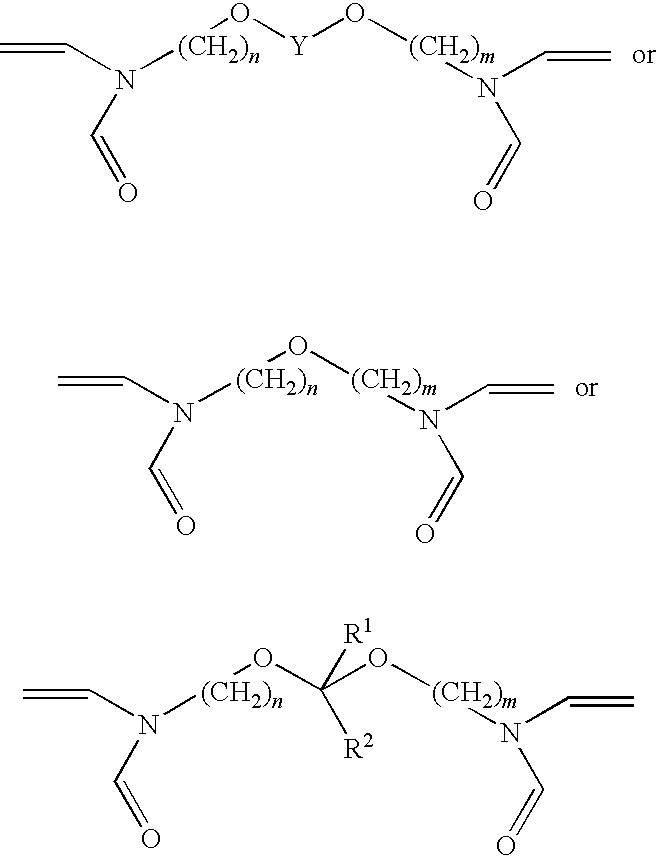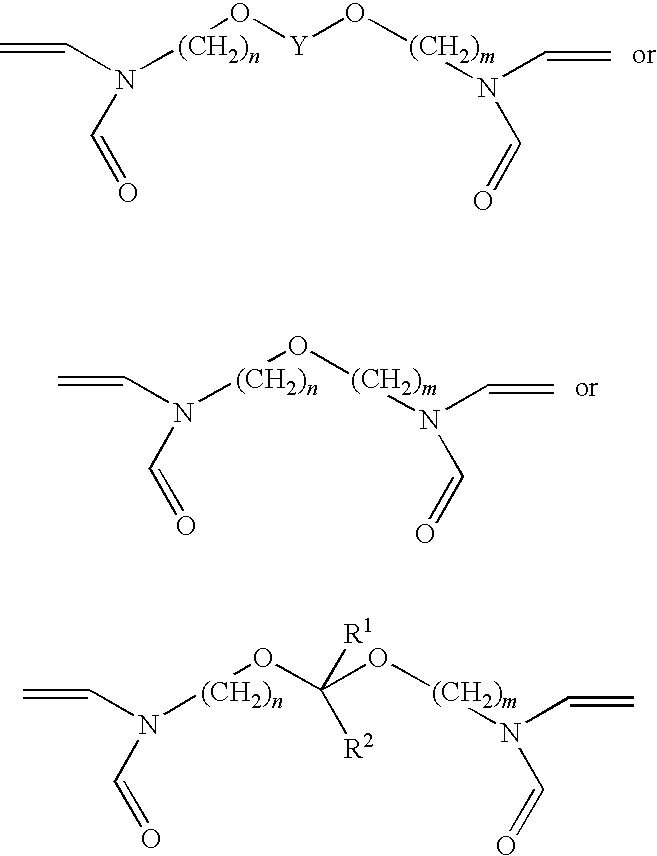Swellable polymer with cationic sites
a cationic site and polymer technology, applied in the direction of fluid removal, chemistry apparatus and processes, borehole/well accessories, etc., can solve problems such as loss or washou
- Summary
- Abstract
- Description
- Claims
- Application Information
AI Technical Summary
Benefits of technology
Problems solved by technology
Method used
Image
Examples
example 1
Prior Art
[0037]We ran a number of slim tube tests in which we injected about 1 pore volume of BRIGHTWATER® (NALCO™, copolymer of acrylamide and sodium AMPS crosslinked with methylene bis-acrylamide and PEG diacrylate) micro-particles into 40 inch slim tubes packed with sand. The sand pack was then heated (150-190° F.) to allow the polymer to pop. Afterwards, water was injected into the sand packs and the resistance to the flow of water measured. While the popped polymers initially exhibited good resistance factors, this behavior appeared to washout with additional water injection. Typically within one pore volume of water injection the Residual Resistance Factor (RRF) dropped to a number about 1-2. This behavior was observed with slim tubes which were packed with 6.7 Darcy sand as well as 1 Darcy sand. Therefore, the treatment effect in porous media with these micro-particles was only temporary.
example 2
Invention
[0038]Since the prior art polymer is subject to washout, we propose that when combined with sufficient cationic sites, such as —NH3+ (quaternary ammonium salt monomers), the resulting polymer will remain stable to washout because the polymer will strongly adsorb to the negatively charged minerals in the formation. We intend to prepare a polyacrylamide copolymer having 0.5%, 1%, 2%, 5% and 10% of a cationic monomer, and repeat the experiments above. We predict that a sand pack treated with polymers having cationic sites will exhibit reduced flow.
[0039]In summary, polymers that can be adsorbed to media having negative charges can be made by the inclusion of at least 0.5 mol percent cationic sites to a particle having been over-crosslinked with methylene bisacrylamide and PEG diacrylates.
PUM
| Property | Measurement | Unit |
|---|---|---|
| volume average particle size diameter | aaaaa | aaaaa |
| volume average particle size diameter | aaaaa | aaaaa |
| particle diameter | aaaaa | aaaaa |
Abstract
Description
Claims
Application Information
 Login to View More
Login to View More - R&D
- Intellectual Property
- Life Sciences
- Materials
- Tech Scout
- Unparalleled Data Quality
- Higher Quality Content
- 60% Fewer Hallucinations
Browse by: Latest US Patents, China's latest patents, Technical Efficacy Thesaurus, Application Domain, Technology Topic, Popular Technical Reports.
© 2025 PatSnap. All rights reserved.Legal|Privacy policy|Modern Slavery Act Transparency Statement|Sitemap|About US| Contact US: help@patsnap.com


